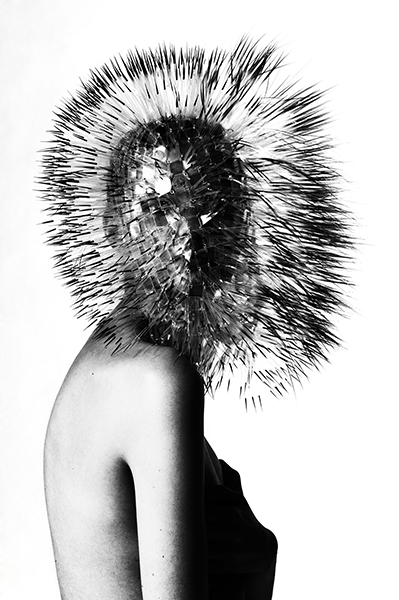Data / Ora
Date(s) - 10/04/2022 - 07/05/2022
2:00 pm - 4:00 pm
Luogo
MOCA London
Categorie
Ram Shergill
Posthuman Bodying
The Birth of a Critical Posthuman Practice
10 April – 7 May 2022
Opening event:
Sunday 10 April
2 – 4pm
Opening times:
Thursday and Friday: 2pm – 6pm
Saturday: 12pm – 4pm
or by appointment
In this exhibition, artist Ram Shergill’s work hypothesises modes of “becoming other together” through sympoiesis (making-with in collectively producing systems). Assemblages of human and non-human agency are established, forging a new form of “Critical Posthuman Practice,” furthering the concept of a new human — a human after the pre-existing human. A new identity is formed through Posthuman Bodying, in which the human body engages in pertinent and critical relations with nature and the ecological environment.
The exhibition explores the viewpoint of a human ”becoming natural” in an environment via sympoiesis (conjoining with the nonhuman through collectively producing systems). Ram Shergill’s work analyses the human body through a performative and aesthetic façade, depicting a visual “Growth of Form.” The human body itinerates radically extending its perceived anatomy, creating new alliances with various species altruistically in the creation of an enhanced “Critical Posthuman Body.” Nature advances through co-evolving, posing a direct challenge to the perception of “being” as linear and static. Instead, this work contends that the human body is a collective of multiple organisms and the human can be extended further to become natural in an environment via a form of organic Posthuman Bodying.
The human identity morphs into newer directions and challenges the perception of the “singular body” when it is aligned cohesively with multispecies entities. The works presented in the exhibition intend to elucidate the notion that we are a species that is convergent and are co-dependant with living organisms and are continuously becoming, in the framework of an ontological hybridisation. Creatively we form a dynamic co-existence in which organisms flow into other organisms. Cells and a multitude of organism’s “co-evolve” and dance in a form of radical relationality – adapting, protecting, creating, mutating rhizomatically[1] with each other in the metabolic universe that is known as the holobiont.
The artworks set out to critically question the intra-relationship between human, animal and botanic organisms. This exhibition sets the foundation to go beyond the visual (re)appropriation of animal characteristics in human appearance, and acts as a catalyst for developing new technologies in the fields of external morphology. This exhibition is part one of the exploration into Ram Shergill’s Carapace systems which will eventually create an outer layer of biogenic flesh, using methods of adaption, growth, and reconfiguration as a response to harsher conditions on Earth and for life support beyond Low Earth Orbit (LEO).
[1] Rhizome is a term used by Deleuze and Guattari and can be described as an itinerant flow of practices, Rhizome was a philosophical concept and developed in their Capitalism and Schizophrenia project. Rhizomes work with trans-species connections and become an “interbeing” and are considered nomadic in culture, science, and theory. In Botany it is known as a plant stem growing from a root in various directions.
Part 1 of the Exhibition will explore the relationality of the human body with various species and how they can “intra-relate” in the creation of posthuman bodies. The birth of a “Critical Posthuman Practice” is established. A “multispecies ethnography” will be carried out at MOCA gallery using art and technology.
Part 2 of the exhibition will elaborate on the concept of “Critical Posthuman Bodying” developing the notion of “intra-relationships” of the human and nonhuman form. The human and nonhuman form assimilate and establish arrangements via sympoiesis in the creation of ecological assemblages through technological devices. The ontological and rational objectivity of the human is challenged, in which the “being” further develops through a symbiotic mix of animal cells and microbes in the creation of a critical posthuman identity. Shergill’s living artworks are exhibited at MOCA gallery, which depict “function and form,” elucidating bodily forms of art and technology through performativity, in the construction of “The Critical Posthuman Carapace.”
In addition to the exhibitions, there will be a symposium during part 2 in collaboration with University College London, including a panel discussion regarding Ram Shergill’s concept of a “Critical Posthuman Practice.” The symposium and panel discussion will feature prolific international guest speakers from the world of art, academia, and technology.




NO COMMENT